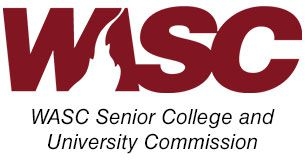You have /5 articles left.
Sign up for a free account or log in.

And they're off.
Four months after the Education Department issued new rules that created the possibility of open competition among accrediting agencies -- and four months before the regulations take effect -- the accrediting body for California, Hawaii and the Pacific Islands announced Wednesday that it would consider approving colleges around the country. Among other things, the new regulations eliminate the historical restriction that regional accrediting agencies can accredit only colleges and universities located in their geographic regions (with exceptions for branch campuses of those institutions).
The Western Association of Schools and Colleges' Senior College and University Commission voted unanimously this month to "broaden our reach," its leaders said in a letter released today. The letter said that several of the colleges and universities that WSCUC already accredits had "asked if we would consider accrediting related institutions located beyond those areas," and that the commission had concluded that "saying yes to these requests is consistent with our mission of supporting institutions we accredit as they seek to reach new audiences and increase their effectiveness and sustainability."
While WSCUC officials are focusing for now on requests from currently WSCUC-accredited institutions that want to either move their campus or start a new institution out of the region, the commission has not ruled out any possibility -- including accrediting a university that is already accredited by an agency in another region.
"This is not an expansion move," Jamienne S. Studley, the Western commissioner's president, said in an interview. "This is initially a responsiveness and service move. It's also an effort to continue to promote our principles in an environment we could tell might be changing."
The rewrite of the rules governing accreditation by the Trump administration and Education Secretary Betsy DeVos -- which started out aiming for drastic changes and ultimately embraced more modest and arcane ones -- was largely supported by higher education leaders but strongly opposed by consumer advocates, who feared that the collective changes would weaken oversight of colleges and universities.
Among the changes made in the 400-page document were several designed to blur if not eliminate the distinction between the "regional" and "national" accreditors -- the two sets of agencies that have the power to decide which colleges and universities qualify to award federal financial aid to their students.
Regional accreditors, which overwhelmingly accredit public and private nonprofit colleges, have -- fairly or not -- often been viewed by many observers as "better" (whatever that means) than national accreditors, most of which accredit mainly for-profit colleges. (A few accredit specialized religious colleges.)
Officials in the Trump administration -- as has been true for previous Republican administrations like that of George W. Bush -- believe that the distinction between the two sets of accreditors unfairly leads to discrimination against for-profit colleges, and have sought to obliterate it.
The move to eliminate the geographic restriction for the agencies formerly known as regional accrediting agencies is designed, in part, to erode the regional/national accreditor distinction.
But the rationale the Education Department put forward last year for ending the geographic limitation was “to allow for additional competition, so that an institution or program may select an agency that best aligns with the institution’s mission and to improve transparency about the states in which each agency accredits campuses.”
Collectively, the seven regional accrediting agencies have opposed significant changes to how they operate, but they ultimately signed off on the final regulations (in large part because they were so much milder than those the department originally proposed).
But advocates for students opposed the changes, arguing that any increased "competition" among accreditors would, almost inevitably, lead to a "race to the bottom" in which colleges and universities would seek out agencies that applied less scrutiny and asked them to meet fewer accountability requirements.
What Is the Western Accreditor Up To?
A decade ago, as congressional Democrats and the Obama administration ramped up their scrutiny of for-profit colleges, two major higher education companies sought to shift their affiliations to the Western accrediting agency when the Higher Learning Commission, by far the largest regional agency covering the vast middle of the country, shifted its policies to look much more critically at the sector. Those companies, Argosy and Bridgepoint Education, both had footprints in California, which is why they were able to shift accreditors despite the geographic limits.
Studley, who took the reins at WSCUC in 2018 after a stint as a senior official in the Obama administration's Education Department, rejected any suggestion that the Western agency was abandoning the limitation of its geographic scope so as to become a haven for lower-quality institutions.
"Our hope is that we will be able to continue the model that we set the bar very high," she said. "I would be surprised if institutions came to us because they thought we were the easy grader. Every fiber of our being is motivated in the direction of strong standards, consistently applied."
What is WSCUC's motivation?
To the extent the agency sticks to its initial self-imposed focus on giving the colleges it currently accredits more options, by creating new institutions or moving to other states in various ways, WSCUC's official statement that it wants to serve its members and students better makes sense. The agency currently accredits branch campuses or locations in 15 states, and recently agreed to accredit colleges in other countries, as several of the other agencies formerly known as regional do.
But WSCUC seems unlikely to stop at this, given its statement's suggestion that the current step is "both deliberate and an opportunity for further meaningful change … WSCUC has long been proud of initiating and responding to change, such as our innovations relating to transparency, outcomes, international, and incubation, and this provides another opportunity to do just that."
Does WSCUC's move, especially if it extends its reach further, open the door to the "race to the bottom" that critics fear?
"No one’s super worried about WSCUC itself," said Clare McCann, deputy director for federal higher education policy with New America's education policy program. "But this makes it harder for the rest of them not to follow suit, setting off an inevitable race."
In combination with other federal rules changes that make it easier for colleges to get and stay accredited, McCann said, "there is likely to be pressure to make their processes less rigorous. WSCUC has historically tried to be a cut above everybody else, and I doubt they will let their reputation flip so considerably. But if other accreditors lose some institutions to WSCUC, there will be a cascading effect that will definitely lead the race to the bottom."
Accreditation officials played down the potential for all-out competition, especially that would result in a downward trajectory in quality.
Belle S. Wheelan, president of the Southern Association of Colleges and Schools' Commission on Colleges, said in an interview Wednesday afternoon that her board would not make its own decision about whether to expand its scope until a meeting in June. "We are not under any requirement to do so," she said.
Asked whether competition among the once-regional accreditors could lead institutions to shop for friendlier accreditors, she said "it might.... Those institutions that feel they aren’t being heard by their accreditor, for whatever reason, might go someplace else."
Said Judith S. Eaton, president of the Council for Higher Education Accreditation: “This announcement by WSCUC is an important development in the life of regional accreditation. There has been much discussion over the past several years about the feasibility of regional accrediting organizations broadening their reach. This is also an example of innovation in accreditation, something that CHEA has long encouraged. We will all learn from WSCUC’s experience here.”









